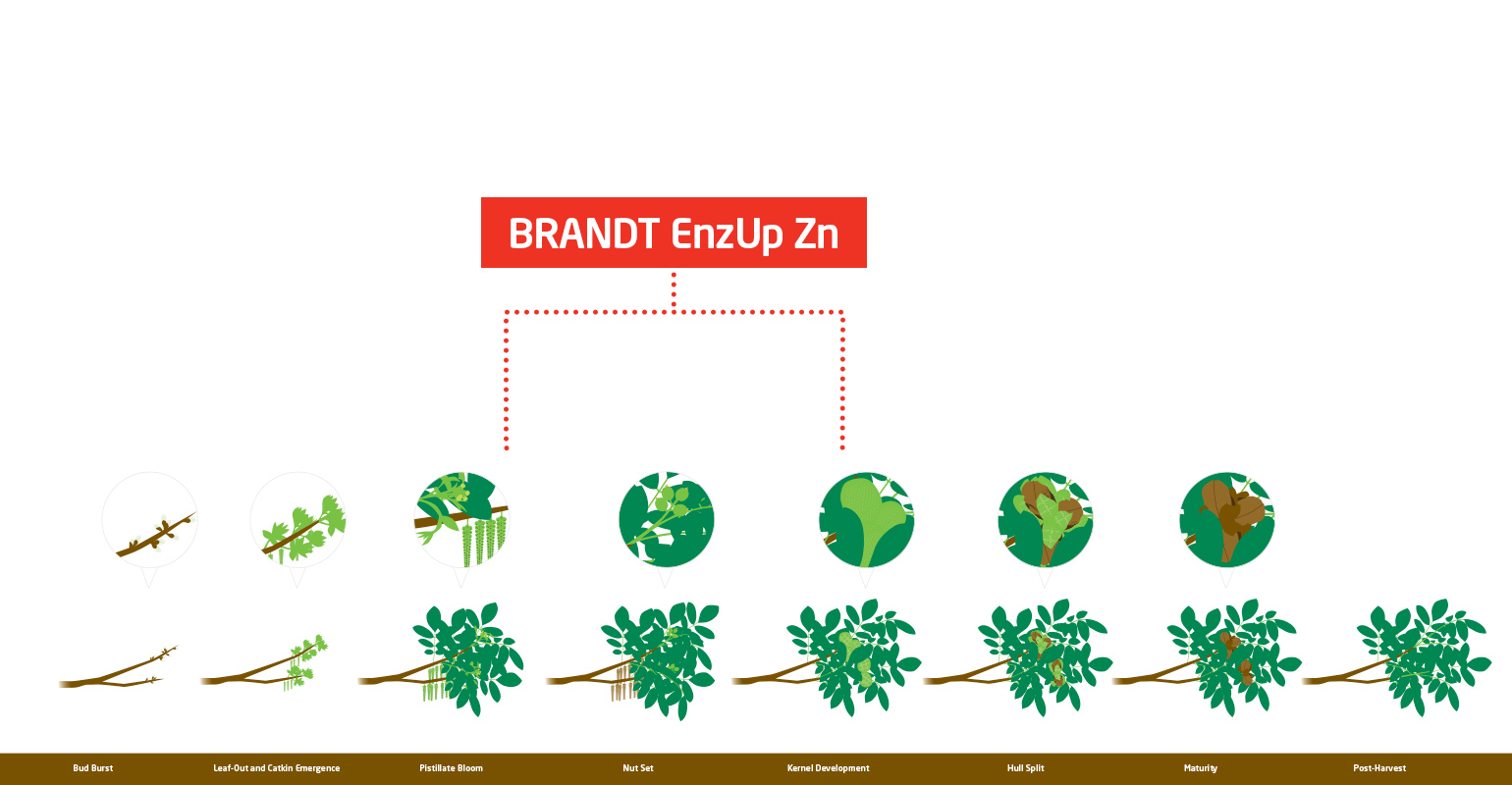BRANDT EnzUp Zn at Root Flush on Walnuts
May 18, 2021
Agronomics / Background
As walnuts continue to leaf out and begin to set nuts in the canopy, below the soil surface, the new root flush is starting to emerge. These “feeder roots” are more active than the older roots from the prior season and are much more efficient at absorbing water and nutrients. In later walnut varieties like ‘Chandler’ this feeder root push typically starts around early to mid-May and correlates well with increased crop demand for nutrients during nut development. As the root flush develops, a variety of carbon-based root exudates are secreted from the root tip in order to facilitate better penetration of the soil.
Benefits of BRANDT EnzUp Zn
These root exudates represent a significant food source for beneficial soil microbes. However the process of breaking down these exudates can be lengthy under natural conditions. An application of BRANDT EnzUp Zn at this time helps to breakdown these exudates and increases the growth rate of these beneficial microbes. These microbes can improve nutrient uptake, increase root growth, and reduce stress development in walnut orchards. Furthermore, the enzymes in BRANDT EnzUp Zn can mineralize organic nutrients making them plant available. These combined effects improve nutrient uptake during nut set and can have a direct effect on improving yield.
Role of Zinc in Walnut Production
Zinc is the most common micronutrient deficiency in most tree crops including walnuts. Zinc is an essential nutrient for maintaining photosynthesis, vegetative growth, pollination, protein formation, and mitigating plant stress. Availability of zinc is impaired by a variety of soil conditions including high pH, high phosphate levels, and sandy soils.
In walnuts, an early spring foliar spray is typically the best way to deal with zinc deficiency. However, soil applications of a chelated zinc can be a good strategy if a foliar spray was not made or if zinc deficiency is still a concern. BRANDT EnzUp Zn is formulated with 4% EDTA chelated zinc. The EDTA chelate will keep zinc in the soil solution and prevent tie-up after application. Applying EnzUp Zn during early root flush means it will be immediately taken up by the walnut trees and start working.
Desired Zinc (Zn) Tissue Test Values
In the spring, zinc levels in a fully expanded terminal leaflet should be at least 30 ppm. In mid-summer that can drop down to 20-25 ppm.
Application and Rates
BRANDT EnzUp Zn can be tank mixed with any other liquid fertilizer blend including those with phosphorus due to the EDTA chelation. It can be banded onto the soil just prior to irrigation, but running it through the irrigation system is probably the most efficient application method. If the soil is very sandy, wait until the last third of the set to apply the material so that it stays the first 1-2 ft of the soil. A single application of 3-4 quarts per acre during early root flush will maximize enzyme activity and zinc uptake.

Nutrient Deficiency Illustrations

Photo Credit: University of California Fruit & Nut Research & Information Center
